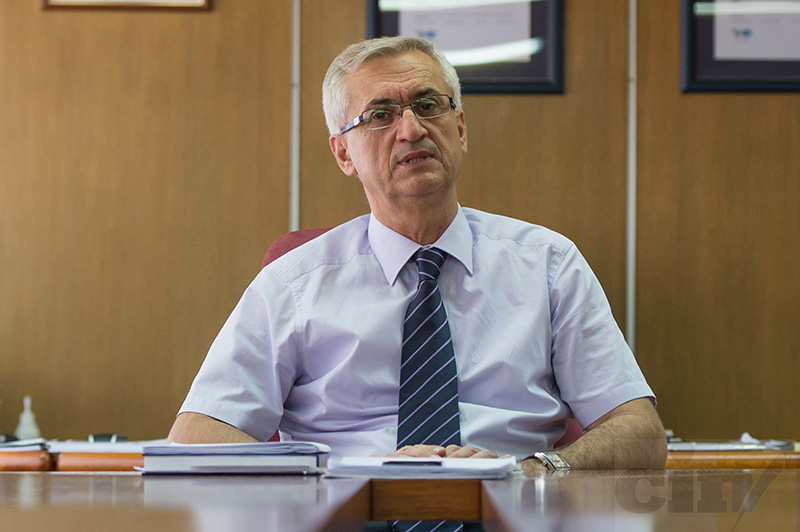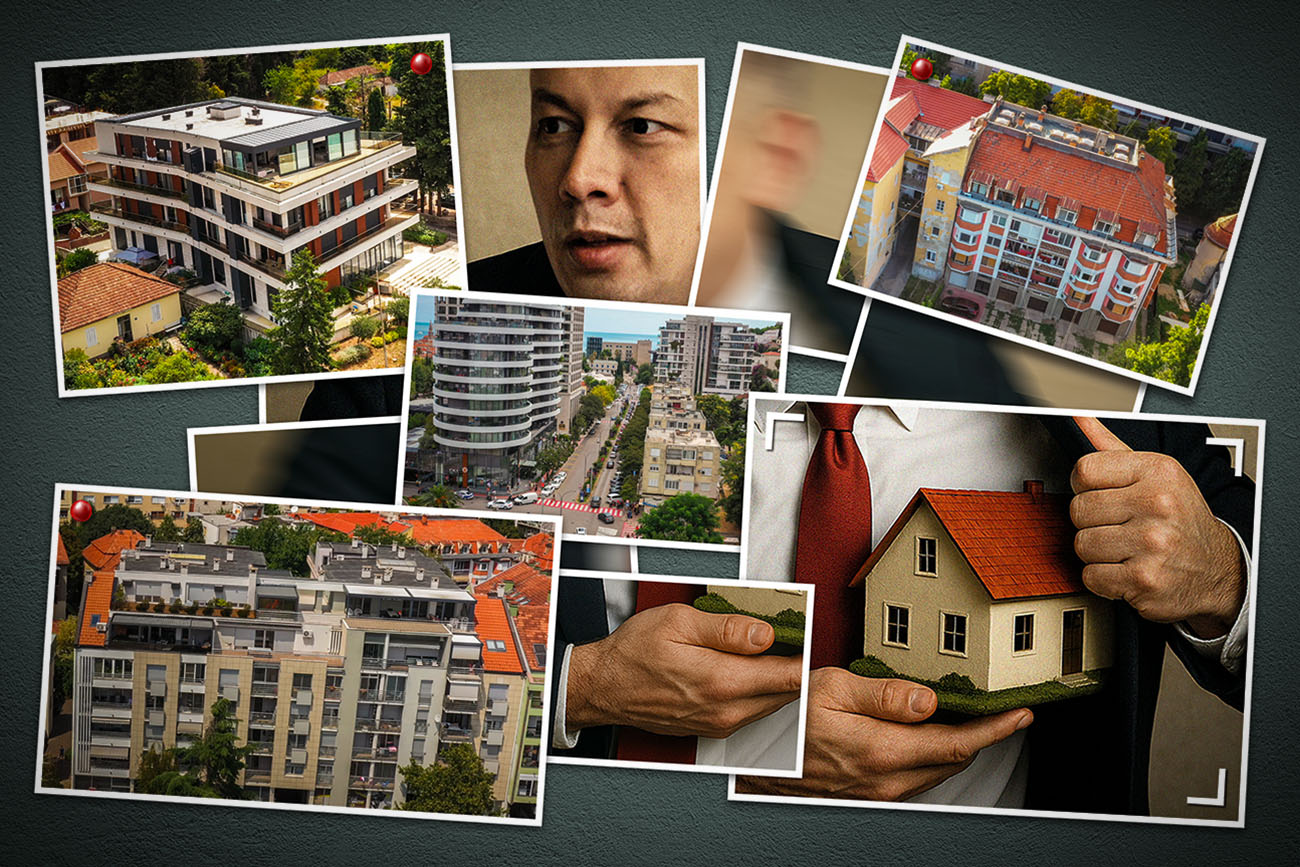Within seven days, six people were buried at the local cemetery in Šićki Brod near Tuzla.
“Here they are: Jusuf Nurkić, Mustafa Ćatić, Mulaga Hirkić, Hasan Husić, Mevludin Begunić, Nusreta Mulaosmanović,” says local priest Nurija Čikarić. They all died during a single week in April 2013.
They died from pulmonary and heart diseases or cancers.
Don't want to miss our stories?
Sign up for our newsletter.
Don't want to miss our stories?
Sign up for our newsletter.
Records from local health institutions show that these diseases are the most common afflicting Tuzla residents. According to the World Health Organizations (WHO), a cause of these diseases are harmful particles released by coal power plants, while the International Agency for Cancer Research points out that poisoned air is the most common cause of pulmonary cancer.
An investigation by the Center for Investigative Reporting in Sarajevo (CIN) shows that Federation of Bosnia and Herzegovina (FBiH) authorities have allowed the Tuzla power plant to pollute above set limits for years. Instead of making it desulfurize smoke, authorities have given it permits with a blank check to pollute beyond international standards.
Power plant representatives use environmental licenses as a means of their own protection, or as an excuse to continue business as usual.

Half a Century of Polluting
The first generator of the Tuzla power plant went into operation half a century ago. Today there are four generators. To achieve an average annual production quota of around 3,000 gigawatt hours (GWh) they go through around 3.3 million tons of coal from the coal basin Kreka-Banovići. Having partially burned sulfur during combustion, the plant’s chimneys release around 50,000 tons of sulfur-dioxide a year.
This harmful gas can cause pulmonary dysfunctions, asthma, chronic bronchitis and pulmonary disease. According to Tuzla authorities, along with this harmful gas, the gigantic chimneys spurt out 4 million tons of carbon-dioxide, 8,500 tons of nitrogen-dioxides and 3,500 to 4,000 tons of dust particles a year.
These numbers exceed the acceptable levels of air pollution set by WHO. Toxic and carcinogenic components in smoke penetrate pulmonary tissue, enter the blood and reach the heart damaging them and causing early death.
“These particles which we cannot see and which we breathe in, contain very toxic carcinogenic agents and metals; there are irritants, allergens and they are slowly killing a person once her defense mechanism has eroded,” said Dr. Nurka Pranjić, a labor medicine specialist at the Tuzla city clinic and a professor at the Tuzla School of Medical Science.
More than 470,000 people from 13 municipalities of Tuzla Canton breathe in air saturated with particles from the power plant. In 2011, 136 persons from the canton fell ill from cancer, while the number of those suffering from the disease was six times smaller in cantons without power plants: Posavina, Livno and West Herzegovina.
Around Tuzla Canton another 242 persons fell ill with lung cancer during 2012 and 2013. During this two-year period, half of 7,686 deaths were caused by cardiovascular and respiratory diseases including lung cancer.
Senail Ajšić from Šićki Brod near Tuzla suffers from breathing problems too. He felt the first symptoms 10 years ago, but chalked them up to poor fitness. Later on, even going to a rest room required him to pause several times. Four years ago he was diagnosed with asthma, a chronic pulmonary disease. He now always carries a little pump to help his breathing.
While walking with CIN reporters through the cemetery where his neighbors were buried, Ajšić says he hopes he will not join them soon. “And then again, it’s from the God… In fact, it’s from pollution. We should not blame God for something he’s not to be blamed for,” said Ajšić.

In the nearby village of Bukinje Mate Marković has buried his mother, brother, a cousin and several neighbors. They all died in their 40s or 50s. “All of cancer,” said Marković. He is 63. That he’s still alive he attributes to the fact that he spent most of his life away from Tuzla. “I used to come once a month, for two days over the weekend and so on,” says Marković.
In the past years, inhabitants of Šićki Brod, Bukinje and Husin, the villages nearby the power plant, have called on the plant’s management repeatedly to act on air pollution. They’ve organized a few protests on which they demanded that the pollution be decreased, adequate health care provided and investment poured into the villages’ infrastructure.
However, power plant representatives, even though aware that the plant pollutes, do not think that they are solely to be blamed.
“I could accept this responsibility if we had the exact data that the power plant was the cause of this all; but this is the result of all the polluters here,” said Izet Džananović, plant director.
CIN’s investigation shows that Džananović is only somewhat right. Of six stations which measure the quality of air in the canton, five are located near the power plant.
Flexible Environmental Licenses
The FBiH Environmental Law stipulated mandatory readings of air quality as of 2003.
According to the law, the air must be protected from pollution harmful to human health. The law stipulates that it’s necessary to take all measures to “bring the level of pollutants to the least possible level.” The law further stipulates that industrial facilities must obtain environmental licenses.

In March 2005, a Rulebook on Monitoring Air Quality was adopted that defined the extreme value for harmful elements. In the FBiH the values were set much higher than those defined by the WHO.
The FBiH Rule Book allows the pollution levels of 125 micrograms of sulfur oxide per cubic meter a day, which is six time higher than the WHO level.
In 2012 and 2013, the air in the Tuzla Canton area contained three to four times more toxic elements than allowed by the Rulebook, according to reports published by the Canton Ministry of Spatial Planning and Environmental Protection.
Pranjić said that the level of pollution defines the level and type of health danger. “If, for example, the acceptable ceiling is crossed by a factor of 10, this increases four times the cancer risk, and for the risk for chronic obstructive diseases 27 times, etc.”
Elvedin Grabovica, director general of the BiH Power Utility that owns the Tuzla power station, told CIN that the power station has licenses for all of its projects. “There are set parameters within the framework of environmental licenses which the BiH Power Utility has adopted into its programs and plans.”
The most important measure which the power plant introduced in the post-war years was to install electrical filters that remove ash from smoke. That is why there has been no black snow in the Tuzla region since last year. But, bigger particles are more dangerous smaller ones because they more easily penetrate the organism through breathing.
The level of tiny particles in the air would have been greatly decreased through desulfurization, but the FBiH Ministry of Environment and Tourism does not oblige the power plant to do it. The ministry’s representatives with whom CIN reporters talked said that the power plant has no desulfurization facilities, but that it nevertheless qualifies for receiving the environmental license because “it does not pose harm to the environment.”

“What we issue as an environmental license is not the real license, but the requirements set out by the government in a flexible way,” says Mehmed Cero, an assistant in the Ministry’s Environmental Department. According to him, the power plant was given the flexible conditions because of its strategic importance. The Tuzla Power Plant is the biggest producer of power in the country and generates half of the total power output in the FBiH.
“If we were to go into desulfurization of the power plant, than you might as well close it. That would mean over 100 million in investments and would not pay off,” said Cero.
Records show that the BiH Power Utility made a profit of 37 million KM in 2013 alone, which means that it would take three years to pay off the cost of installing desulfurization facilities.
On the other hand, research by the European Agency for Health Risks and the WHO commissioned by a Tuzla-based Center for Ecology and Energy shows that by 2030, the financial costs would rise to €810 million and the loss of 39,000 lives to deaths caused by chronic diseases.
The research was conducted in 2012 using HRAPIE methodology which defines the maximum daily level of particles. The Center’s Director Džemila Agić told CIN that she decided to take this step because of significantly higher levels of sulfur dioxide (SO2) than are acceptable.
Maden Rudež, an advisor for environmental permits, said that solving such problems takes time. “In the current conditions we cannot solve SO2 because we use coal…What is to be done with our coal? It’s our resource!” says Rudež, adding that the new power plants would have desulfurization facilities installed. “We want everything that takes 100 years to be solved in 100 days! Well, forget about it,” said Rudež.

Pay to Pollute
According to the FBiH Law on Environmental Protection, the power plant pays a fee for polluting environment. The fee is calculated based on the annual level of particle emissions. However, the power plant has discretion to set the pollution levels.
According to director Džananović, the power plant pays around 2.5 million KM in annual fees.
Some money remains with the Environmental Protection Fund, while 70 percent of it goes back to Tuzla Canton which finances ecological projects submitted by the municipalities. Tuzla municipality spends part of the money on a distance heating project that aims to decrease the number of households that use coal for heating. Ajšić and the inhabitants of the most affected Tuzla settlements have not received the distant heating and the work there is on hold. For them this would mean a symbolic satisfaction for the price they pay with their health.
He says that he will not give up the fight for clean air. “Politicians tell me: ‘What are you doing? Air is fine. We breathe it and we’re alive!’; ‘Yes’, I say ‘but it’s not good for everyone. While you have it fine we breathe poison. We get sick and die,’” says Ajšić from Šićki Brod near Tuzla.







